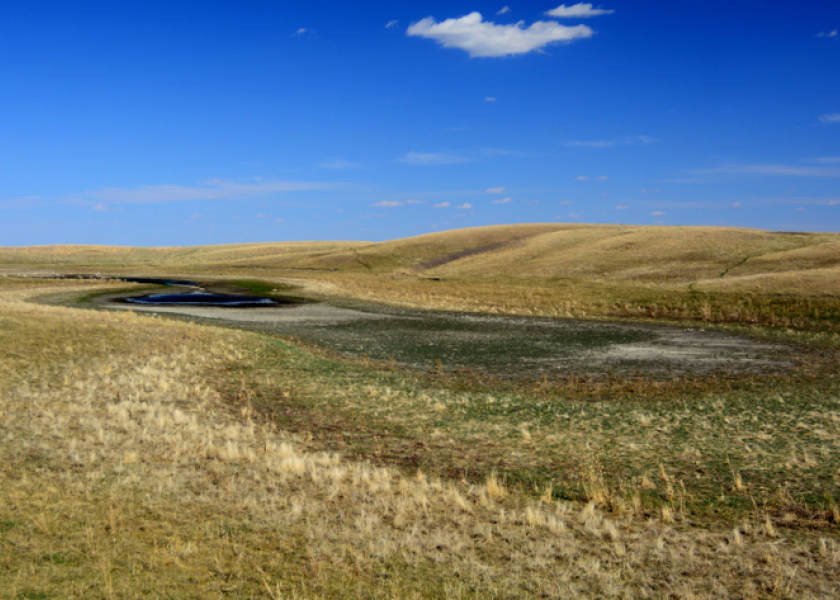Livestock Water Challenges Expected to Continue in 2022

Access to adequate, good quality water will continue to be a challenge for ranchers in North Dakota this spring, according to North Dakota State University (NDSU) Extension livestock environmental stewardship specialist, Miranda Meehan.
Many ranchers in the region still depend on surface water sources, such as dugouts and stock dams to provide water to grazing livestock. Due to drought conditions in both 2020 and 2021, many livestock sources either dried up or were potentially toxic to livestock.
Many sources in the state naturally contain salts, which are dissolved minerals or solids.
“Elevated concentrations of total dissolved solids (TDS) and sulfates can be toxic to livestock, resulting in decreased performance, abortions, blindness, central nervous system disorders and death,” says Meehan. “For most classes of grazing livestock, the TDS in the water should be less than 5,000 parts per million (ppm). Sulfate is part of the TDS. The recommended concentration should be less than 500 ppm for calves and less than 1,000 ppm for adult cattle.”
In 2021, Extension agents screened 1,547 water samples from 37 counties in North Dakota. The screenings identified 151 sources with elevated TDS levels, greater than 5,000 ppm. Potentially toxic sulfate levels, greater than 1,200 ppm, were identified at 330 locations.
Improvement in water quality in surface water sources depends on runoff.
Many surface water sources entered the winter at very low levels, if not dry. Even in areas of the state that received fall moisture, the majority of it infiltrated and replenished soil moisture and did not run off.
Across much of the state, snowpack is below normal or not present, which will decrease the potential for runoff. Unfortunately, spring rainfall alone likely will not be adequate to dilute salt concentrations in surface waters.
“As you prepare for the upcoming grazing season, we recommend monitoring water quality and evaluating alternative water options,” says Meehan. “We recommend a couple tools to aid in monitoring water quality, a hand-held TDS meter and sulfate test strips. Both these tools are affordable and easy to use. If the screening indicates the TDS is greater than 4,500 ppm and/or sulfates are greater than 800 ppm, submit a sample to a lab for additional analysis.”
Meehan encourages ranchers who encountered water quality issues in 2021 to evaluate and consider developing an alternative water source.
“Installing a water development plan can help ensure that livestock have access to good-quality water throughout the grazing season and increase a ranch’s drought resilience,” says Meehan.
Many cost-sharing opportunities are available to producers for installing water developments through agencies and organizations including the Farm Service Agency, Natural Resources Conservation Service, soil conservation districts and conservation groups. In addition, the Department of Water Resources still has funds available through the Drought Disaster Livestock Water Supply Project Assistance Program.
For more information on livestock water quality, contact your local NDSU Extension office or visit www.ndsu.edu/agriculture/ag-hub/ag-topics/livestock/water/testing-livestock-water-quality-critical-during-drought







